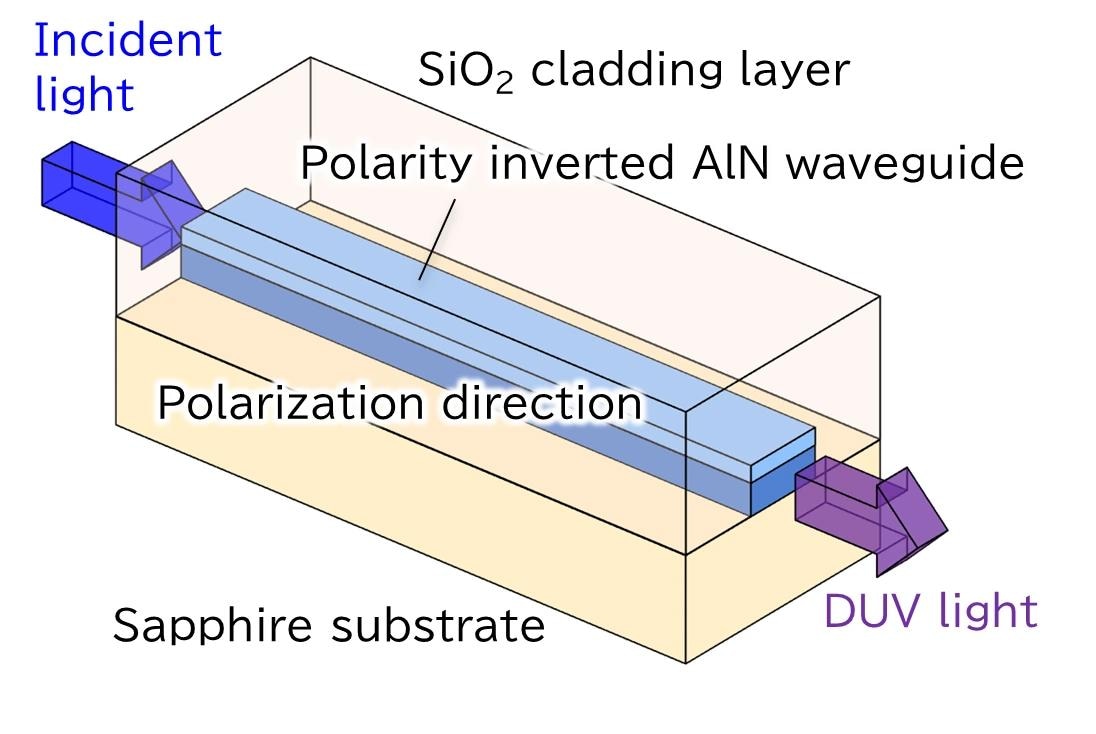While it has long been known that ultraviolet (UV) light can help kill disease-causing pathogens, the COVID 19 pandemic has put a spotlight on how these technologies can rid environments of germs. However, the excimer lamps and LEDs that can directly emit light in the required deep-UV wavelengths generally have low efficiency or suffer from short lifetimes. Moreover, UV light of the wrong wavelength can actually be harmful to human cells.
 Wavelength conversion device using polarity inverted AlN structure. Image Credit: Hiroto Honda
Wavelength conversion device using polarity inverted AlN structure. Image Credit: Hiroto Honda
Now, a team led by researchers from Osaka University has shown how an optical device made of aluminum nitride can be used to generate deep-UV light in a method wholly different from previous approaches. The team made use of a process called ‘second harmonic generation,’ which relies on the fact that the frequency of a photon, or particle of light, is proportional to its energy.
Most transparent materials are considered ‘linear’ with respect to their response to light, i.e., photons cannot interact with each other. However, inside certain ‘nonlinear’ materials, two photons can be combined into a single photon with twice the energy, and thus, twice the frequency. In this case, two visible photons can be merged into a single deep-UV photon inside an aluminum nitride waveguide less than one micron wide. A waveguide is a channel of transparent material with physical dimensions chosen so that light of desired frequencies can travel easily. The waveguide helps take advantage of the nonlinear optical properties of the material, so that second harmonic generation can occur with the highest efficiency.
“Our new fabrication method for deep-UV light generation borrows techniques from semiconductor processing, which allows for precise control of the orientation of the aluminum-nitride crystal. This was difficult to achieve in the past,” explains lead author Hiroto Honda.
The wavelength of UV light created by the prototype device is within a very narrow range that has enough energy to kill germs but remains mostly harmless to humans.
“The results of our project help show that compactness and efficiency is possible for deep-UV disinfection tools, without sacrificing human safety,” says senior author Ryuji Katayama. The researchers hope to refine this method to produce commercial devices that consume less energy than previous options.